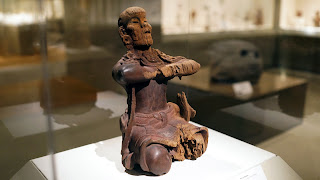"The Temple of Flourishing Law" - Asuka Period
https://smarthistory.org/japan-jomon-heian/
The Asuka period was Japan's first historical period. What made the Asuka period different from previous prehistoric periods (Jomon period, Yayoi period, and Kofun period.) was the introduction of writing from China and Korea. The introduction of written language was extremely influential on this time period because it introduced not only writing, but also a standardized measuring system, a new currency in the form of coins, and the practice of historical record keeping. Eventually, these things would lead to the creation of a centralized and bureaucratic government modeled after the Chinese.
The Asuka period was also the time when Buddhism was introduced to Japan. This would significantly change Japanese culture and society because it differed from the traditional, indigenous religion of Japan, Shinto or "way of the gods". Shinto is a relatinship with nature that represent important spirits with shrines in nature. Before Buddhism, Shinto spirits were associated with sacred objects or shrines in nature; things such as a sword or a mirror, even a tree or a mountian. Buddhism introduced a way to visualize deities as a human representation and as a result, changed the visual and material culture of Shinto. Buddhism influened indigenous culture to take on new forms and modes of expression.
Horyoji Temple in Nara. Also known as "The Temple of Flourishing Law"




Comments
Post a Comment